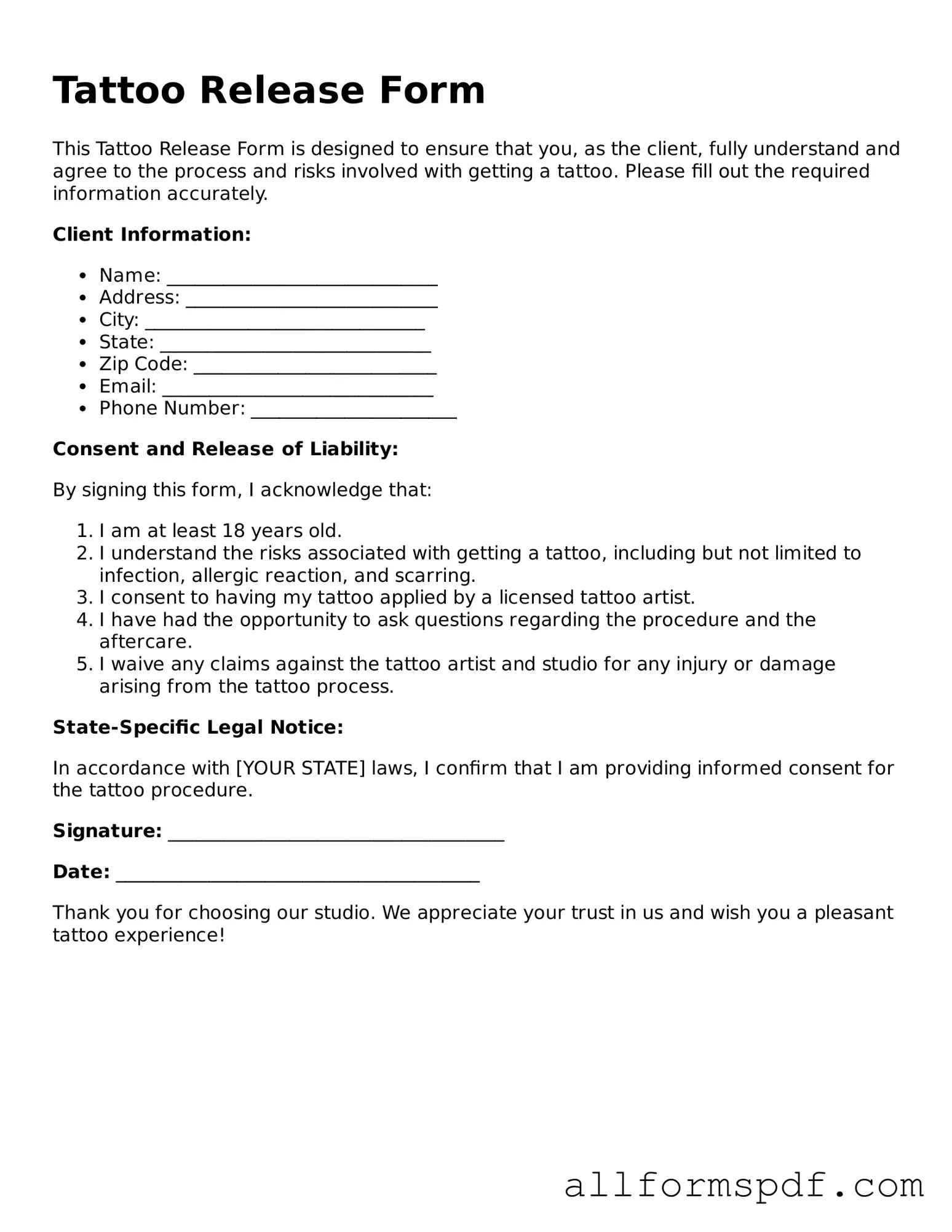When filling out a Tattoo Release form, people often overlook important details that can lead to complications later on. One common mistake is failing to read the entire form before signing. Many individuals may rush through the process, assuming they understand the terms without fully grasping the implications. This can result in unintended consequences regarding their rights and the use of their image.
Another frequent error is not providing accurate personal information. This includes misspelling names or providing incorrect contact details. Such inaccuracies can create difficulties in communication and may hinder the tattoo artist's ability to reach out if needed.
People sometimes neglect to specify the exact location of the tattoo on their body. This omission can cause confusion about which area is covered under the release, potentially leading to misunderstandings about consent for future use of images.
Some individuals fail to check the box or sign where required. A missing signature or unchecked box can render the entire form invalid, meaning the tattoo artist cannot use the images as intended. This simple oversight can lead to significant issues later.
In addition, many people do not consider the implications of granting permission for their image to be used in promotional materials. They may not fully understand how their image might be used in advertisements or social media, which can lead to discomfort or regret.
Another mistake is not asking questions if something is unclear. Many individuals feel hesitant to seek clarification, but it’s essential to understand every aspect of the form. Ignoring this step can lead to misunderstandings about rights and responsibilities.
Some individuals may also forget to discuss the release with their tattoo artist beforehand. Having a conversation about the form can clarify intentions and ensure that both parties are on the same page regarding the use of images.
People occasionally overlook the expiration date of the release. If the form does not specify a time frame, it may lead to confusion about how long the artist can use the images. Understanding this aspect is vital for managing expectations.
Additionally, individuals might not keep a copy of the signed form for their records. Retaining a copy is important for personal reference and can be helpful if any disputes arise in the future.
Lastly, many people do not consider the impact of the release on their privacy. It’s crucial to understand that signing the form may allow the artist to share images publicly, which can affect personal privacy. Being aware of this can help individuals make informed decisions.
